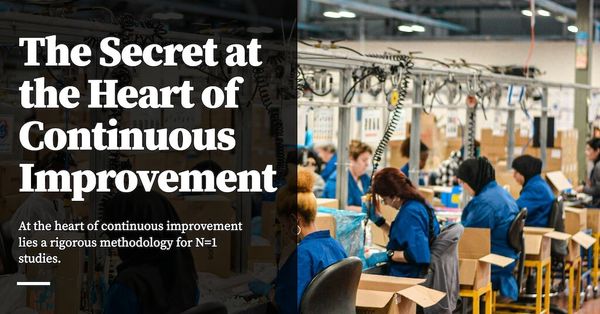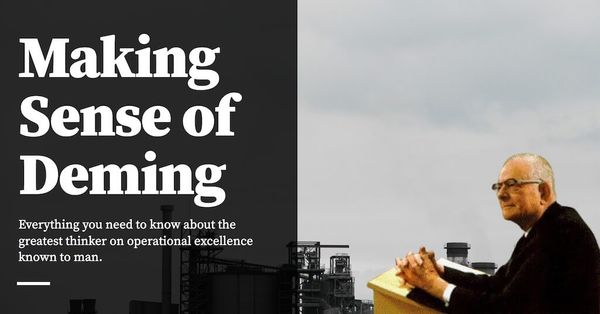This is the fourth post of The Chinese Businessman Paradox. View the previous post here.
Some domains of business require strategic ability, others less so.
My previous company sold point-of-sale software in Singapore — relatively undifferentiated products in a boring, mature market. Yes, we faced fierce competition from the beginning, but we clawed our way to a comfortable position by the end of two years. In retrospect, our market was simple. We didn’t really have to worry about strategy; we didn’t have as many degrees of freedom as, say, Facebook, or Google, or Amazon.
Strategy matters when you’re a complex business, operating in a market at the margins of what is possible. As Silicon Valley veteran Ben Horowitz puts it:
Technology businesses tend to be extremely complex. The underlying technology moves, the competition moves, the market moves, the people move. As a result, like playing three-dimensional chess on Star Trek, there is always a move. You think you have no moves? How about taking your company public with $2M in trailing revenue and 340 employees, with a plan to do $75M in revenue the next year? I made that move. I made it in 2001, widely regarded as the worst time ever for a technology company to go public. I made it with six weeks of cash left. There is always a move.
This might be true when you're a cutting edge tech company. It matters less when you’re selling commodities, as we were.
The insight that strategy matters in some business verticals, and not others, isn’t particularly useful — you shouldn't pick business domains based on how strategic the domain is, and you don’t really know the moves available to you until you become a player. In many cases, it takes a year before the lay of the land becomes clear to you, before you can even begin to think strategically.
(I don't want to leave you with the wrong impression here: strategy is, I think, the domain of the experienced business person. Running operations was difficult enough for me as a newbie operator. The first year we pivoted into point of sale systems, my boss and I were working so close to the grindstone we didn't realise we understood the point of sale industry until after operations seemed under control. I don't see any other way we could have done this — we took on no funding apart from what we sold, and we needed to scale sales, engineering and customer support before we ran out of money and had to return to software consulting. And it seemed — for a few tenuous months after the first year — that an arbitrary crisis might erupt at any moment to upend the sheen of stability we had achieved.)
This idea of relative strategic difficulty isn't a unique one, though. In his memoirs, Malaysian tycoon Robert Kuok talks about being burnt by plywood manufacturing early in his career. The business was the first non-commodity market he tackled, and the complexities of the business were surprising and difficult to surmount. He pulled out a few years later. In comparison, Kuok reflected that flour, sugar, rice and steel were easier businesses to operate and compete in. The products were undifferentiated, and the demand was relatively predictable.
I want to talk about strategy today because I think the majority of traditional Chinese businessmen don’t think strategically. They think opportunistically. And that’s perfectly fine — by and large, the business domains they work in don’t demand it.
But these particular, non-strategic Chinese businessmen that I know don't grow their companies very large. And I'm starting to believe that their lack of strategic thinking has something to do with this.
To reason more concretely about this, let’s talk about one of the great challenges of building a business from scratch — something I call … The SME Loop.
The SME Loop
The SME loop (or trap) is my name for what that seems like a fundamental law in business. It has to do with what happens when you attempt to grow a multinational company from scratch.
The name is mine, and perhaps it is an unnecessarily fancy name for something that's already widely known. But I don't think it is — I've searched the business literature on and off over the past two years for articles discussing this problem, and I can't seem to find anyone talking about it. Maybe it's so basic that it doesn't warrant further discussion. Or perhaps the business literature is interested in other things.
The reason I think I’m on to something, however, is that when I talk to people running small-to-medium sized businesses, they recognise the problem immediately when I describe it. It appears that this problem has occupied their minds for far longer than it has occupied mine.
The SME loop is as follows:
Imagine that you're a traditional small-to-medium-sized enterprise, or ‘SME’. The business model doesn't matter for this discussion. You could be making and selling physical items, in which case you own equipment and hold inventory and require a fair amount of cash on hand. Or you're a software consultancy and you turn programmer hours into code. Or you're a distributor: you buy some product, and sell it to consumers for a markup.
After a few years of execution, most SMEs stagnate. They remain small-to-medium sized. Growth slows to a crawl. If we treat this study of businesses like we would organisms, there appears to be an invisible ceiling that constrains the growth of many of these small businesses. Few of them grow to become conglomerates like Mochtar Riady's or Ng Teng Fong's, or multinationals like Nike or Microsoft.
Why is this so?
Zooming in on these businesses gives us further details. After a few years of execution, assuming nothing in the macro environment changes, the revenues and profits of most SMEs will stabilise. This happened to us, too — we went from 0 to $4.5 million in annual revenue in two years. My boss developed the skills necessary to scale the sales and customer support organisations, and I learnt how to scale our engineering and product development commensurately. And then we came up against a wall.
It turned out that we were stuck in a loop. If we grew our sales organisation, it wasn't clear that our product was good enough to handle an increased number of bookings, for a wider variety of businesses. Developing to meet this demand would require additional software engineering. But maintaining the current level of revenue took up around 80% of the engineering organisation's bandwidth. And, if we increased bookings, we would need to increase the number of people doing support engineering and deployments and frontline customer support. There wasn't enough free cash to do all of that, not from profits alone, and so we made only marginal improvements.
This series of marginal improvements was a loop of increasing costs, which led to increased revenue, followed by reinvesting profits to increase costs to increase revenue: marginal improvements, never breaking free.
My boss and I had long discussions about this problem. The goal — ever elusive — was to break out of this loop and to reach the next level of business success. And so we began to look at other businesses, and other entrepreneurs, and started to ask questions.
The truth is, once you recognise the existence of the SME loop, you'll begin to see it everywhere. That famous corner store restaurant in your neighbourhood, that expanded to only three outlets over the course of two decades? SME loop. That medical devices distributor my best friend works for, in Kuala Lumpur? The business makes millions selling to hospitals every year but has remained the same size for about a decade.
Watching these businesses stagnate became my obsession. How was it that certain businesses could grow to become conglomerates, and others stayed the same? How could we break out of the loop?

No Free Capital
Venture capitalist Paul Graham likes to say that any business built for growth is a startup. If you aim to be the next Google, there are certain things you need to do that will define you; these traits are things you share with other similarly ambitious companies — and for convenience we call this set of companies “startups”. But there are plenty of large businesses that don't fit this mould. Conglomerates like the kinds built by overseas Chinese businessmen are one sort; privatised national companies that later venture into neighbouring industries are another.
The common thread amongst all these companies — or at least, the ones that successfully broke free from the SME loop — is this: they had access to a line of capital that enabled their growth. After a few months of searching, my boss and I eventually came to the same conclusion: it seemed like it was impossible to break free from the SME loop without some sort of external capital injection.
We know the obvious examples, of course. Google and Facebook expanded using venture capital — and VC money is the example that springs to mind when we think “external capital”. But there are alternatives, and it's rather interesting to walk through some of them.
Nike grew by forming a desperate partnership with the Japanese corporation Nissho Iwai — which operated a department in financing imports and exports. In his memoirs, Phil Knight wrote that Nike did so because they were rejected by every bank they had worked with up to that point. Nissho was the only option willing to take a strong bet on them.
On the other side of the globe, Robert Kuok's first big break came from Bangkok Bank, when its patriarch, Chin Sophonpanich, decided to take a chance on him. But Kuok’s eventual rise to tycoon came not from the relationship he had with his banks, but instead from his activities as a commodity trader in London — the third year of which, he wrote, made him “a net cash profit for the year equivalent to 14 million Malaysian-Singapore dollars. It was a lot of money: before that, Kuok Brother's entire capital was about five million Malaysian-Singapore dollars at the very most.” The sheer amount of money Kuok made from his trading was how he funded his way into a diverse number of businesses, including hotels, real estate, and shipping.
Perhaps the most interesting stories are the businesses that never took on external funding, yet grew to become large multinational corporations. Microsoft took on only $1 million in external investment, and not for the money. Bill Gates explains:
"Software, if you can sell it in volume, has extremely favorable economics because the costs are quite finite, and you can scale the volume, in our case, to sell millions of copies – every Apple II Computer, Commodore PET, IBM PC had copies of our software, so our income went up a lot. We didn't have to build any factories, we were cash positive, and we didn't have a year where we lost money. The first few years Paul (Allen) and I worked for free, but after that we were just generating cash. We eventually gave away, or sold, 5% of the company for a million dollars at a 20 million dollar valuation, just to get a venture capital company to join our board and give us some adult advice about various things, which was quite helpful. We picked one in the valley, a guy named Dave Marquardt came on our board and did a fantastic job.
That money sat in the bank, and it's still in the bank today, so it was not for anything to do with capital, but rather just to join the team... he's still on the board of Microsoft and is still extremely helpful as a lot of important decisions get made."
Essentially, Microsoft made so much money that it could fund all the extra initiatives it needed until it went public 10 years after its founding. The company is — in every way — an exception to the SME loop.
But perhaps Microsoft best explains this phenomenon. It appears to me now that every business has an equilibrium point, beyond which further growth is difficult. This equilibrium point is determined by market size, business model, and competition.
If you were Nike, selling shoes in a growing market in America, working with a distributor business model, you would need huge amounts of capital to procure inventory and grow.
If you were Microsoft, selling software with no marginal costs in a growing market with little viable competition, you should be able to expand on pure profit alone. Your equilibrium point is far higher than the average SME; you’ll find your market pulling your product out of you — and in Microsoft’s case, the market was eventually so large that Microsoft blew past the SME stage without breaking a sweat.
Interestingly enough, this idea of equilibrium point from market size, business model, and competition also suggests a framework for thinking about growth. If several competitors are killed due to changes in the external economic environment, you’d expect the survivors to experience growth after the hard times are over. It is for this reason that I’m interested in my best friend’s medical equipment distribution business. Malaysia’s healthcare sector is currently suffering from a reduction in government spending; my friend’s company is doing well, while several of its competitors have already folded. I should expect them to experience a growth spurt in the next few years, assuming the market recovers.
From the perspective of the single business person, however, the SME loop feels universal: businesses grow until reaching their natural equilibrium point, after which further growth is difficult. You can’t wait for competitors to die; instead, you have two choices: expand into new geographical markets, or grow with the aid of new products. If true, this explains the need for external capital: entering new geographical markets or launching new businesses are inherently capital-intensive affairs.
Chinese businessmen and the SME Loop
With a few notable exceptions, the vast majority of successful traditional Chinese businessmen have chosen the route of escaping the SME loop by pursuing additional — and completely different — lines of businesses. This has led to the prevalence of ‘Asian conglomerates’ — where a parent holding company owns many subsidiaries in an incredibly diverse number of industries: energy, edible oils, shipping, real estate, hospitality, telecommunications and so on. The benefit of this structure has been to subsidise new business units with the profits of other business units.
Why a majority of Chinese businessmen chose this route remains a major source of mystery for me. When I left the point-of-sale business in late 2017, I wondered what steps my boss would take to escape the SME loop. And I began to wonder if the first generation of traditional Chinese businessmen chose the route of multiple diversified businesses because it was the easiest way to escape the SME loop ... or if perhaps there was something about developing markets that caused them to expand this way.
(And if so, why are there less such conglomerates in the West? Why are these conglomerates far more common in Asia? These are interesting questions — but the answers aren’t readily available to me; not for a few decades, and not until I’ve have had the experience of growing such businesses.)
Perhaps the right way to think about this is that the relentless pursuit of growth led them to expand into adjacent markets — and the markets for commodities and infrastructure was ripe for the taking in the early years of South East Asia’s development.
Some of these businesses — like real estate, or hotels — might have easier access to banking capital compared to others. And others had fewer competitors. The same trial and error approach to companies that I talked about in earlier posts allowed Chinese businessmen to take whatever opportunities presented themselves. The smart ones were strategic (or lucky) and choose well; the ones who didn’t make it did not.
Maybe strategy matters. Maybe trial and error works only for starting small businesses, but breaking past the SME loop requires picking markets or businesses strategically.
But this is where I've reached the limits of my explorations. I can't talk about this until I've worked long enough on the problem; as far as I know, nobody has really dealt directly with this. I've only found snippets or hints in the memoirs of various Chinese businessmen. What's clear to me is the following: the vast majority of Chinese businesses take a very long time to grow. You don't take this path for the short term.
Give me a decade and I’ll let you know.
Note: I've written an addendum about a Singaporean startup breaking out of the SME loop here.
I've also written a follow-up post (part 5) on cash flow here.
Originally published , last updated .





